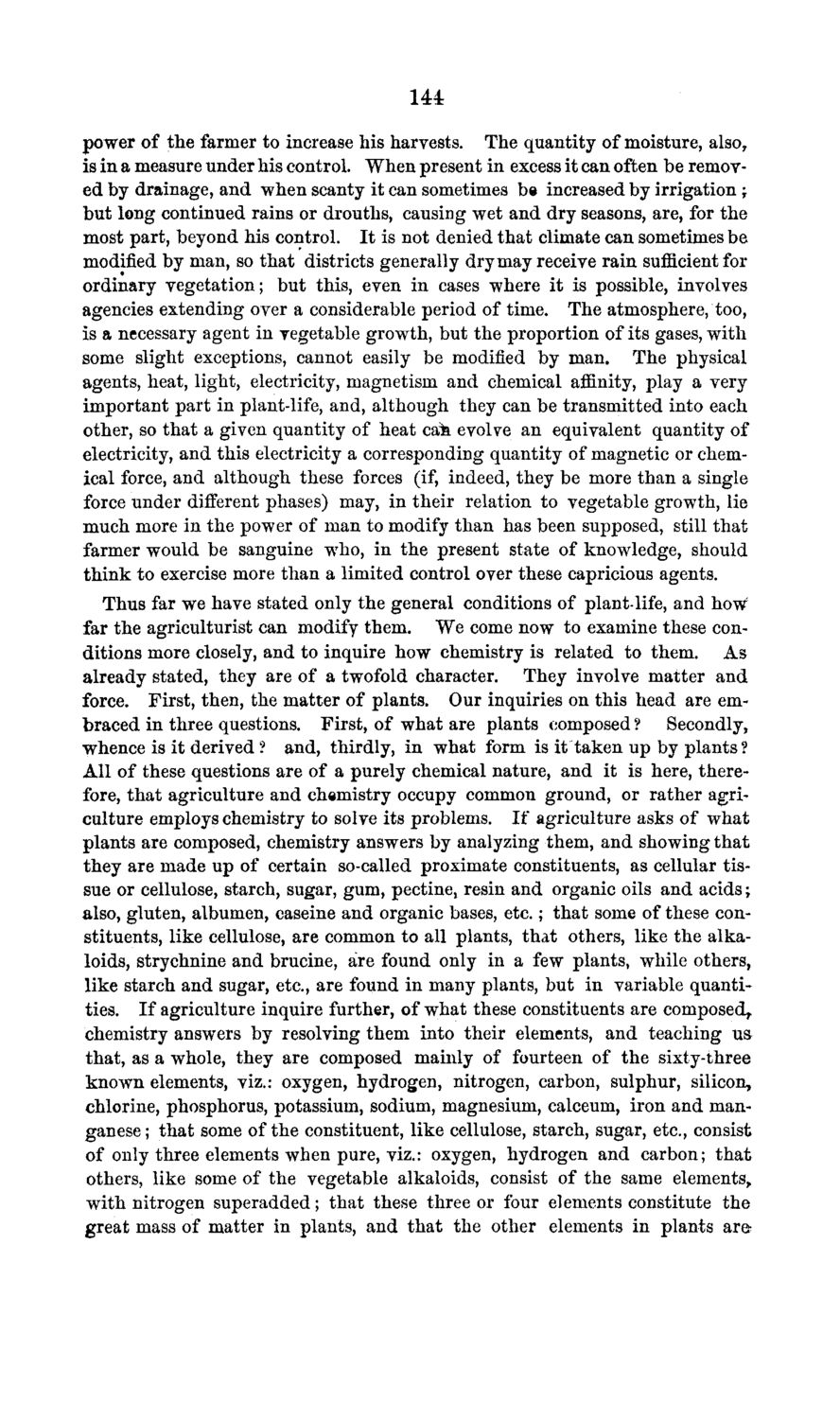| |
| |
Caption: Board of Trustees Minutes - 1869
This is a reduced-resolution page image for fast online browsing.

EXTRACTED TEXT FROM PAGE:
Ui power of the farmer to increase his harvests. The quantity of moisture, also, is in a measure under his control. When present in excess it can often be removed by drainage, and when scanty it can sometimes be increased by irrigation ; but long continued rains or drouths, causing wet and dry seasons, are, for the most part, beyond his control. It is not denied that climate can sometimes be modified by man, so that districts generally dry may receive rain sufficient for ordinary vegetation; but this, even in cases where it is possible, involves agencies extending over a considerable period of time. The atmosphere, too, is a necessary agent in vegetable growth, but the proportion of its gases, with some slight exceptions, cannot easily be modified by man. The physical agents, heat, light, electricity, magnetism and chemical affinity, play a very important part in plant-life, and, although they can be transmitted into each other, so that a given quantity of heat cak evolve an equivalent quantity of electricity, and this electricity a corresponding quantity of magnetic or chemical force, and although these forces (if, indeed, they be more than a single force under different phases) may, in their relation to vegetable growth, lie much more in the power of man to modify than has been supposed, still that farmer would be sanguine who, in the present state of knowledge, should think to exercise more than a limited control over these capricious agents. Thus far we have stated only the general conditions of plant-life, and how* far the agriculturist can modify them. We come now to examine these conditions more closely, and to inquire how chemistry is related to them. As already stated, they are of a twofold character. They involve matter and force. First, then, the matter of plants. Our inquiries on this head are embraced in three questions. First, of what are plants composed ? Secondly, whence is it derived ? and, thirdly, in what form is it taken up by plants ? All of these questions are of a purely chemical nature, and it is here, therefore, that agriculture and chemistry occupy common ground, or rather agriculture employs chemistry to solve its problems. If agriculture asks of what plants are composed, chemistry answers by analyzing them, and showing that they are made up of certain so-called proximate constituents, as cellular tissue or cellulose, starch, sugar, gum, pectine, resin and organic oils and acids; also, gluten, albumen, caseine and organic bases, etc.; that some of these constituents, like cellulose, are common to all plants, that others, like the alkaloids, strychnine and brucine, are found only in a few plants, while others, like starch and sugar, etc., are found in many plants, but in variable quantities. If agriculture inquire further, of what these constituents are composed, chemistry answers by resolving them into their elements, and teaching us that, as a whole, they are composed mainly of fourteen of the sixty-three known elements, viz.: oxygen, hydrogen, nitrogen, carbon, sulphur, silicon, chlorine, phosphorus, potassium, sodium, magnesium, calceum, iron and manganese; that some of the constituent, like cellulose, starch, sugar, etc., consist of only three elements when pure, viz.: oxygen, hydrogen and carbon; that others, like some of the vegetable alkaloids, consist of the same elements, with nitrogen superadded; that these three or four elements constitute the great mass of matter in plants, and that the other elements in plants are?
| |